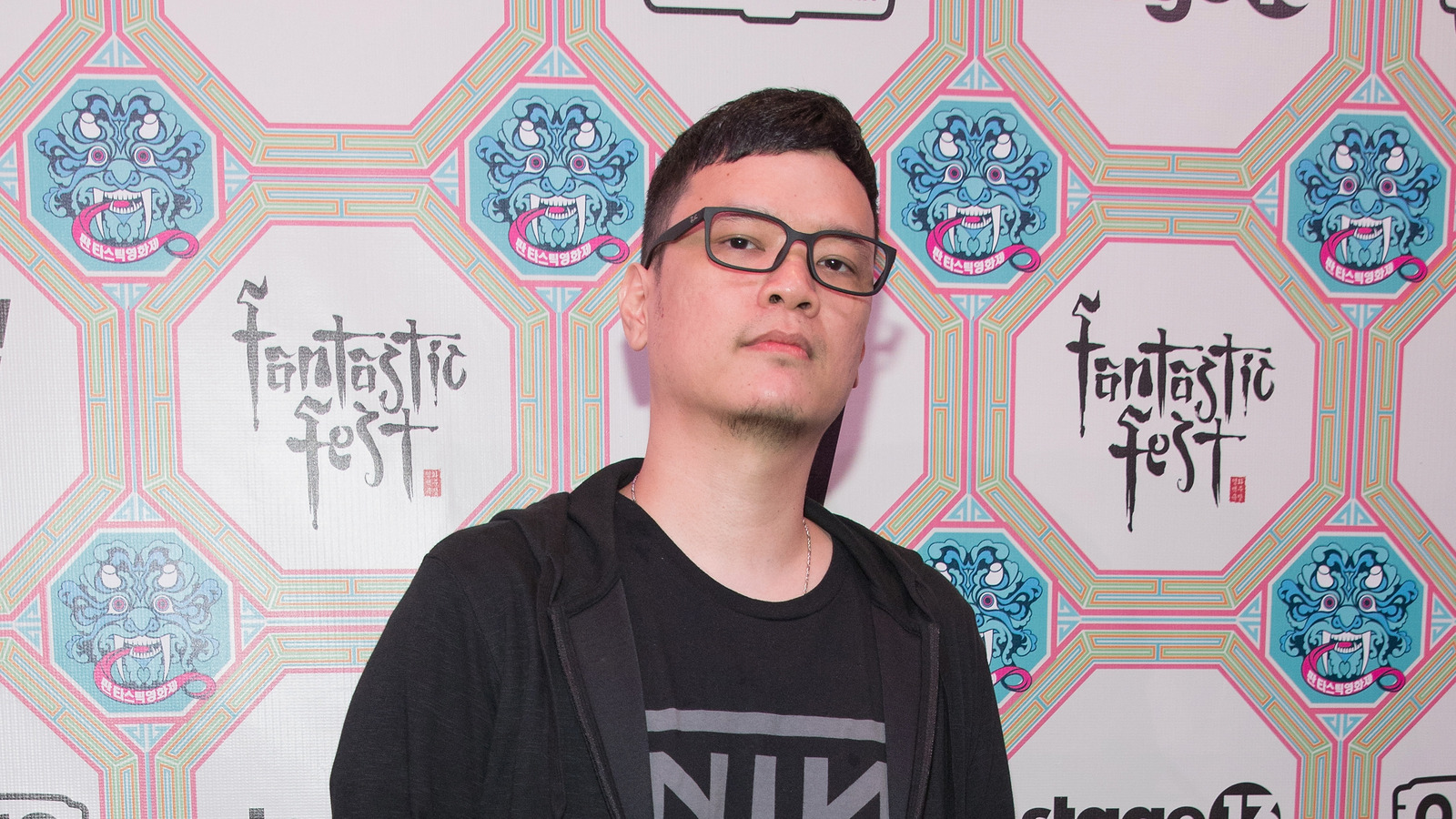#The easy evolution of Slum Village

Detroit hip-hop is a global phenomenon now. But when T3, Baatin, and J Dilla were growing up in the historically Black Conant Gardens neighborhood in the ’80s and ’90s, the scene was provincial. The two MCs (T3 and Baatin) and rapper/producer (Dilla) formed Slum Village in 1996, the same year Proof, Bizarre, Mr. Porter, Kuniva, and Bugz founded D12.
“Me and Proof were very close,” T3 tells me. “We used to kick it and do all types of shit together. It was a very small circle in Detroit at that time. We weren’t in each other’s studio sessions like that, but everybody knew everybody.”
Despite their proximity, the two groups went in totally different directions, with SV putting a slick Detroit twist on the jazz-infused sounds of “golden-age” New York crews like A Tribe Called Quest, Jungle Brothers, and De La Soul, while D12 took an edgier, more ironic route, especially after Eminem joined in 1999.
Slum Village is best known, at this point, as the world’s introduction to Dilla, a sampling visionary widely considered one of the greatest producers of all time. But Dilla left the group in 2001 after only two albums (Fan-Tas-Tic volumes one and two) as their full-time producer, though he collaborated regularly with its fluctuating lineup until his untimely passing in 2006. The next 20 years and change saw the arrival and departure of Elzhi in 2002 and 2010, respectively; Baatin’s exit in 2003 and brief return in 2008 before he too passed away the following year; and a short stint in the mid 2010s from Dilla’s younger brother Illa J. From then through now, the group’s only constant presences have been founding member T3 and a later addition, Young RJ.
A decade younger than SV’s original members, RJ got his first production credits with the group as Dilla packed his bags, joining them during their most tumultuous period. He soon became their main producer and, with 2013’s Evolution, became T3’s full-time rapping partner as well.

Photo by Ralph Rice.
In 2015, Slum Village released Yes!, featuring new verses from T3, RJ, Illa J, and a star-studded group of guests over unreleased Dilla instrumentals (posthumous vocals from Baatin also appear). The years since have seen T3 and RJ touring aggressively and releasing archival and remixed compilations of SV’s earlier work. But F.U.N., released earlier this month, is their first album of original music in nine years.
The new record, first discussed in 2018 but recorded mostly over the past year, brings funk and disco influences to the forefront of the group’s aesthetic, though the jazz and soul tinges Dilla favored are not entirely absent either. The project hosts several returning collaborators — Fat Ray, Karriem Riggins, Abstract Orchestra — as well as newer friends such as Larry June, Brittney Carter, Sango, and Robert Glasper, who produced F.U.N.’s closing track with help from his son Riley. These aesthetic and personnel updates don’t amount to a reinvention of Slum Village’s proverbial wheel, but the wheel is certainly spinning again, moving confidently forward and easily shaking off a decade of dust.
When I caught up with T3 and RJ over video call the week after F.U.N.’s release, they were home in Detroit, basking in the afterglow of a smooth release week and a successful European tour. We talked about the state of Detroit rap, innovation in the shadow of Dilla’s legacy, crate digging, and perfecting the creative process through 20 years of collaboration.
Detroit hip-hop is having a moment right now. We’ll get to that later, but first I was wondering if you could take me back to what the scene looked like in the mid ’90s, when I was in diapers and you were starting a legendary rap crew.
T3: It was a small scene. The hub that we had to go to was two spots, mainly: St. Andrew’s, which had a party on Friday nights, and the Hip Hop Shop, which we did on Saturdays. Those were the spots where all the MCs and people who wanted to make beats went. St. Andrew’s was downtown and Hip Hop Shop was in the middle of the hood on 7 Mile, and that was a clothing store by Maurice Malone, so it was small.
All we did — all a lot of people did — was press our own cassette up. That’s how we first got our buzz going. We were premiering stuff at St. Andrew’s and at the Hip Hop Shop, [but now we could] actually play it and give it to the DJ, who was House Shoes at the time, and people started getting to know the songs from him playing them every week. From that, we started doing shows. Then we did [Fan-Tas-Tic] volume one, and we got our deal shortly after that. That was the ’90s — all of us trying to make it out to D. I mean, not make it out to D, but make it in the D and get known nationally, internationally.
“We were always individuals within a unit, so keeping the legacy going was easy.”
The cast of Slum Village has changed quite a bit over the years, with Dilla leaving in 2001 and Elzhi joining around then, and then Baatim leaving pretty soon after. RJ, what was it like to start working with a group that had so much change going on?
Young RJ: The change never bothered anything because the sound once Dilla left was consistently me and T3, so we never really had to worry about that part. It was just a matter of who was gonna be rapping at the time. It was nothing major.
Yeah, at this point you and T3 have been the only constants for the vast majority of Slum Village’s almost 30-year-run. But Dilla obviously casts a big shadow over the group’s legacy, rightfully. How do you navigate working within that legacy and honoring the original SV sound while making it your own?
RJ: It’s always been the same thing: Don’t get stuck in the past trying to do something that has already been done within Slum Village. [We’ve] consistently pushed the boundaries, so we never really look back at the past, what we’ve done, which is why the new album sounds the way it sounds. We always try to keep it going forward.
T3: One thing Dilla would always say, too, is “just do you.” Dilla mentored [R]J, you know, showed him some things. He mentored me on production, too. But, at the same time, he never wanted nobody to copy. He wanted you to do you.
We all contributed a lot to the original Slum Village sound. Dilla was definitely a big part of it, but so was Baatim. We were always individuals within a unit, so keeping the legacy going was easy.
We were still signed [when Dilla left], and we had to tell the label he was leaving, and they were like, “Okay, so what part did he do?” I was like, “Well, you know, some of the beats.” And they were like, “OK, so who was writing the hooks and the verses?” I was like, “I wrote half of the hooks and then I wrote my verses and then, you know, Baatim wrote his and Dilla wrote his.”
They said, “Well, I think y’all can still keep it going,” and that gave me a lot of motivation. That’s what made me bring in a whole cast of new producers, even though Dilla still produced four joints on the Trinity album. That was a time when we were really scrambling. That’s when me and [R]J came up with our think tank on how we were gonna keep this thing going for Slim Village.
It sort of sounds like the label had no idea what went into making a rap record.
I mean, they knew the sound — they loved the sound — but sometimes the intricacy… We didn’t have a label looking over our shoulder like some artists do. We were able to just do us, which is rare when somebody hands you a check for $500,000.
2013’s Evolution was the start of a new era, the first release where it was mainly the two of you rapping. Then you dropped Yes! in 2015, and now, nine years later, F.U.N. How have you changed and grown as a duo over the last decade?
RJ: We’ve just cut out a lot of the extra process. We always set the song up a certain way: I do the tracks, T figures out the hook, he puts his verse down, and then everybody else comes in. So it was just cutting out everybody else coming in, and me and T just focusing and getting it done, which to me is easy breezy. It’s familiar because we’ve been doing it for so long.
T3: Right. We’ve been together so long that he knows what I’m thinking, I know what he’s thinking. We can go in there, listen through records together, pick loops, and he’ll chop it up. I might make one or two beats, and then we put it together. We start writing the songs, and it just comes together, man. It’s really a no-brainer, so we just be having fun with it.
I know you’ve toured a lot together for the last 10 years, but F.U.N. is your first album of new music since 2015. What’s been going on in your lives, and when did you start talking about making this new record?
RJ: After Yes!, we toured for a bit and then decided to take a break because we’d been going non-stop for so long. From Villa Manifesto [(2010)] all the way up to Yes!, we dropped multiple projects every year.
The conversation for the new album started in 2018. We talked about maybe doing something new, and then we put it on the back burner and kept touring. Then we got hit with COVID, so we sat down. Really it was over the last year when we figured out a direction and said, “Alright, let’s follow through with this,” and the album started coming together.
T threw out that maybe we should go disco influenced, speed up the tempo a bit. And the rest, it was just rolling from there once we had the direction.
I read that the process of making this album started out with you going to record stores, crate digging for disco. Has that type of exploration always been central to the way you work?
RJ: Yeah, every time we sit down and talk about where we want to take it, what we feel is not in the marketplace. That’s what we make: what we want to hear, what we feel is missing.
Were there any specific disco records that sparked the energy for this project, whether or not they actually made it onto the record?
RJ: It was just funk and disco influence, just good music in general. The album is really heavy on the funk. It’s disco as far as how some of the hooks are real chanty. But yeah, we listened to “Funkin’ For Jamaica,” the Bee Gees, random disco records we thought were dope.
I hear a lot of classic funk like Ohio Players and The Gap Band on F.U.N.. Were there any funk or rare groove deep cuts you found in the dollar bins?
T3: I can’t name them offhand, but yes, we did find some deep cuts. We were looking for funky disco — not just disco, funky disco — the kind you hear in them clubs in deep Chicago.
Speaking of Chicago, F.U.N. opens with a 90-second verse, not from either of you but from Chicago rapper Brittney Carter. How’d you connect with her, and why did you choose to start the album off that way?
T3: I heard of her on the internet first because she rapped over our record “Get This Money,” and I thought she was pretty dope. I was talking to one of my homies, Hex Murda, and I was like, “Yo, man, you know we’re working on a new album,” and he was like, “That’s dope. Do y’all got any ladies on there?” I was like, “Yeah, you know what? We probably do need to do that.” He gave me a list of female MCs, and I was like, “You know what? We should mess with Brittney Carter.”
I hit up J and told him the plan. He reached out to her, and she was excited, and we thought it would be a dope idea for her to do the intro, her own thing. That way she could showcase herself and us at the same time, in a sense. We always like to bring new talent to the forefront.
There are a bunch of smart collaborations on the record. Larry June, for instance, fits really well on “Just Like You.” Even though he’s from a younger generation, that track —and his verse, in particular — feels like a throwback to the earlier SV stuff, maybe more so than anything else on the album.
T3: Larry June’s the homie, man. He’s a cool dude. He was a fan of the group, and we kind of did the swap thing; we got on the Alchemist album with him. When he heard the joint, he immediately loved it, so that was a no-brainer.
You’ve got some great instrumental collaborators on this record, too. You’ve worked with Kareem Riggins in the past, and with Abstract Orchestra. Was “Since 92” your first time working with Robert Glasper?
T3: I did a few shows with him, but [we never got] in the studio. Robert’s a homie. He loves Slum Village. He always says it, shouts us out, so it was an honor to work with him and his son, Riley; they produced the track together.
[Glasper] was like, “I’m working on these tracks with my son. I’m gonna send you some joints.” And then we heard it, and it was like, “Yeah, I think we’re gonna mess with this one.”
F.U.N.’s title track is another of my favorites, and another throwback. Tell me about making that one with Drey Skonie, who really leans into the old-school Motown singer thing.
RJ: It started off the same way we were saying before, just listening through records till we found something dope. It went from that to bringing in musicians and completely changing the record around. And it came pretty quick. Just like before, I knocked the beat out, and T knocked out the verse and the hook. All that stuff just fell into place. We were performing it on tour with nobody even knowing the song, and the fans were loving it. So we were like, “We’ve gotta put this on the album.”
We were looking for funky disco… the kind you hear in them clubs in deep Chicago.
You had some other Detroit collaborators, too, like Fat Ray, who came up just a little after Slum Village on Barak Records and is now part of Bruiser Brigade. I wanted to ask about another side of the Detroit scene — rappers like Babyface Ray, Veeze, Peezy, and Icewear Vezzo who’ve blown up in a very different lane from y’all. Do you have any thoughts on where the scene is at? Do you think of any of those artists as successors?
T3: Let me start off by saying this: I do love what they’re doing. As far as being successors, not so much. It’s more street stuff, and I like it because it’s its own sound. The thing I like about Detroit is that it’s many different sounds. Even when we came up, D12 didn’t sound like Slum Village. It’s everybody coming in their own lane, and I like this new lane: Sada Baby, Babyface Ray, Peezy, all these guys. They’re coming with a different sound. Long as we keep it creative, I’m with it.
Slum Village had our wave, and now they’ve got a wave. Detroit got enough. You never know — you might see us collaborating on some stuff. It could be in the bag already.
RJ: Yeah, stay on the lookout for new music. We’re not taking another 10-year hiatus. We coming right back.
If you liked the article, do not forget to share it with your friends. Follow us on Google News too, click on the star and choose us from your favorites.
If you want to read more Like this articles, you can visit our Social Media category.




